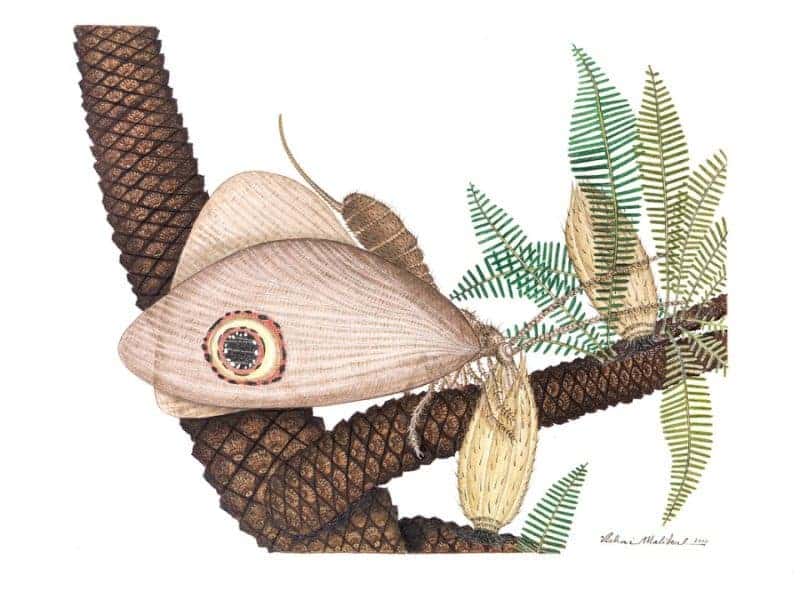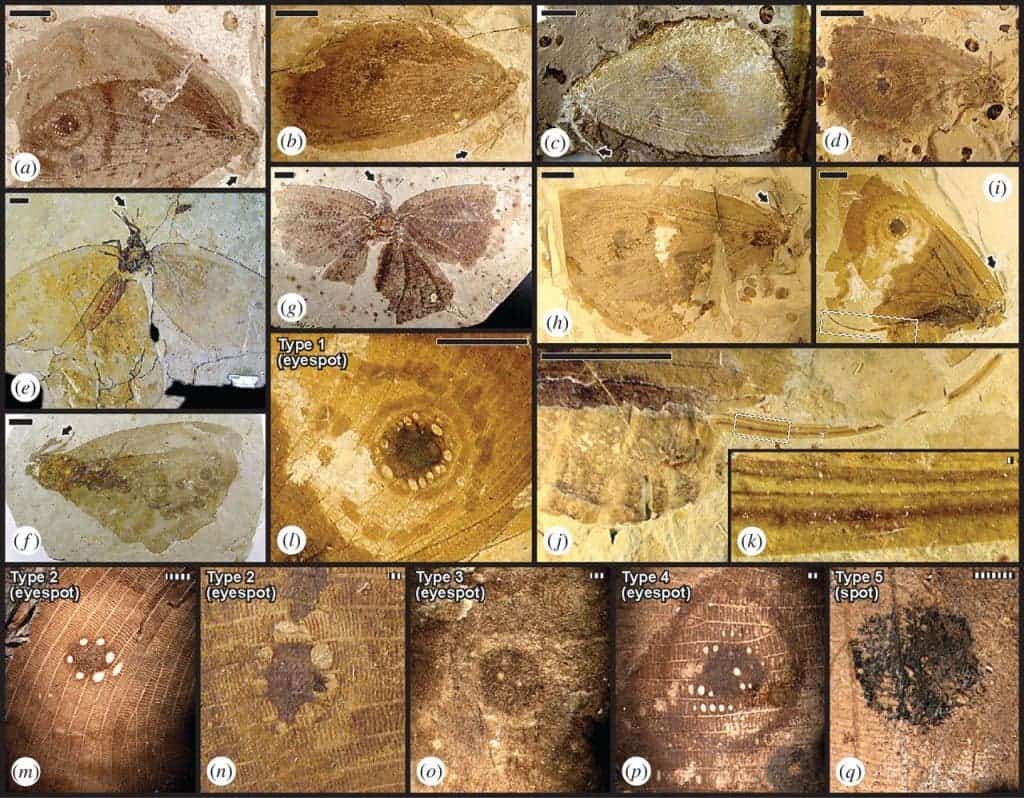Discovered in ancient lake deposits in northeastern China and eastern Kazakhstan, this ancient insect looks and exhibits behavior closely mimicking the modern butterfly. The Jurassic age insect entered the fossil record 165 million years ago, while butterflies as we know them first appeared 80 to 90 million years ago. Though these are set apart by many millions of years, researchers found numerous morphological and ecological features in these two, unrelated clades.

Artist’s rendering of Oregramma illecebrosa. Image: ichai Malikul
David Dilcher, a Indiana University paleobotanist, along with colleagues used various cutting-edge techniques ( polarized light and epifluorescence photography, SEM imaging, etc) to study the fossils which belong to the genus kalligrammatid — extinct “lacewings”. Dilcher was involved in the botanic side, and it was soon clear that his experience would prove invaluable in unraveling and tracing the extinct lacewing behaviour.
Dilcher found that the insect, called Oregramma illecebrosa, was covered in microscopic remains of food and polled. He and colleagues concluded that the kalligrammatid must have fed upon an extinct order or seed plants called bennettitales, which first appeared 250 million year ago and survived for a striking 200 million. The insect fed upon the bennettitales using a long tongue to probe the nectar. The pollen would get stuck to both the mouth and hairy legs it possessed. This way the insect must have carried the pollen from the male flower-like reproductive organs of one plant to the female organs of another. This system later was replaced by mid-Cretaceous angiosperms and their insect pollinators, the researchers note in the paper.

The Kalligrammatid fossils clearly exhibit eye spots. Image: Proceeding of Royal Society B
This is in close association with butterflies, which isn’t enough though to consider the two examples of convergent evolution — the process whereby organisms not closely related (not monophyletic), independently evolve similar traits as a result of having to adapt to similar environments or ecological niches. Convergent evolution becomes clearer when we consider the fact that the ancient lacewing fossils’ wings were covered in so-called ‘owl spots’. The texture of the wings resembles big eyes which would fool predators they were in fact face to face with someone who might actually them. The pattern is nearly identical to the modern owl butterfly.
“If it worked once, why not try it again,” said Dilcher commenting upon evolution’s ingenious ways.









